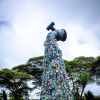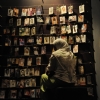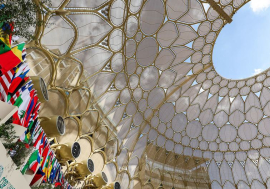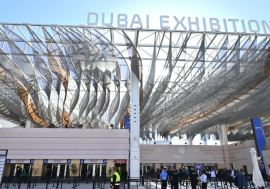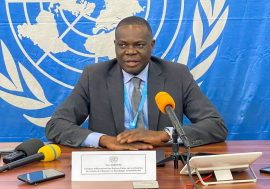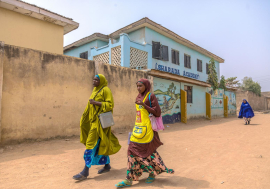Historic ‘Ark of Return’ monument on slavery unveiled at the UN
Historic ‘Ark of Return’ monument on slavery unveiled at the UN
A sculpture commissioned by the United Nations to commemorate the end of slave trade was unveiled at UN Headquarters in New York today 25 March to coincide with the International Day of remembrance for the victims of slavery. Africa Renewal’s Jocelyne Sambira caught up with the architect, Rodney Leon to talk about why it is important to have that monument at the UN after all.
Africa Renewal: How does it feel to be the architect of the Ark of Return?
I am happy that I could play this important role and be a part in the commemoration of such an important historical event that really transformed the world. I’m glad we now have a physical marker and a place of remembrance for this annual celebration.
You also designed the African Burial Ground National Monument in lower Manhattan in New York. What motivates you?
My Haitian-American background played a part. The history of the Haitian liberation and the country’s struggle to be the first independent African state in the western hemisphere are things my parents always talked to us about as a family. I’m proud of my Haitian and African heritage. I tend to be inspired by ideas that drive people to do great things. As architects and designers, one of the biggest responsibilities is to memorialize and make physical the accomplishments and the historical feats of those who came before us, as well as to create a place of remembrance for their sacrifices.
There is a piece in this particular monument called the “Trinity Figure”. What does it represents?
The trinity figure is a human figure and represents the human spirit. It represents more specifically the spirit of the men, women and children of African descent who died during the Transatlantic Slave Trade, especially those who died during the “Middle Passage” aspect of that slave trade experience. We felt that those millions of unknown people needed to be manifested somehow within the memorial.
What does the triangular waterfall mean?
Well, there are three essential aspects to the project whose theme is: “acknowledge the tragedy, consider the legacy, lest we forget”. These three themes deal with the past, present and future. The triangular waterfall, which is the aspect of “lest we forget”, extends out towards the front of the monument and is supposed to deal with the idea that we are here now in the present but we need to think about the suffering that is occurring in the world regarding human rights violations, contemporary slavery, child sex trafficking and the abuse of women and children. The introduction of water through this element is about cleansing, passing through the space, rejuvenation. It is about looking and thinking forward.
So why did you settle on the name ‘Ark of Return’?
In our research, one of the things that struck us most was the “Door of no Return” in Gorée Island, Senegal, where slaves held in captivity on the African coast went through before being shipped away. The idea of people being taken through that door onto slave ships and never to return was a very tragic image and we felt it would be a good counterpoint to establish a spiritual space of return, an “Ark of Return”, a vessel where we can begin to create a counter-narrative and undo some of that experience. The idea is that you are not necessarily returning physically, but there is a psychological, spiritual and emotional transformation, as well as a cleansing feeling through the process of moving forward to a place where humanity comes closer together.
Everyday there are people who come from all over the world to visit the UN and the ‘Ark of Return’ will be something they will be seeing. At the end of the day, what is it you want them to take home?
One of the reasons why we created the sculpture that you could pass through is that we wanted people to, not only to be allowed to reflect and have the opportunity to be educated, but also to be able to connect with the experience, hopefully in a very profound and spiritual way. We want it to be very interactive and we expect people to touch things like the map, the image we have of slave ship and the water. Through that, we hope people will see this place and this monument at the United Nations as a place of pilgrimage and also a place that represents the largest struggle for humanity – ending slavery.



